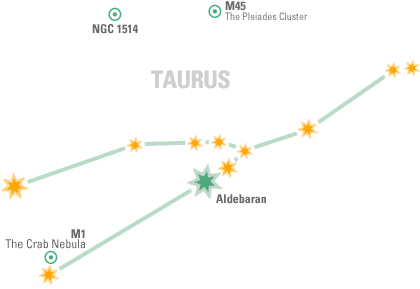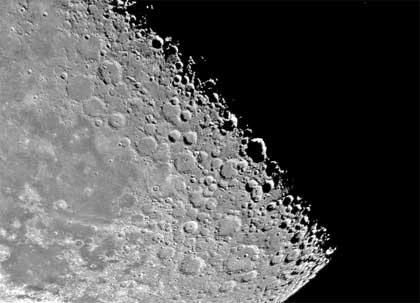 |
||||||||||||||||||||||||||||||||||||||||||||||||||||||||
|
If you have trouble viewing this newsletter, click here. Welcome again to our monthly newsletter with features on exciting celestial events, product reviews, tips & tricks, and a monthly sky calendar. We hope you enjoy it!
On January 27th, Saturn will reach opposition — the closest it will be to Earth in 2006. Amateur astronomers the world over will be aiming their telescopes at the ringed wonder. This is not a new phenomenon; humanity has been fascinated with Saturn for millennia. As you peer through your eyepiece and ponder the ringed planet with the benefit of our modern understanding of science, consider how perplexing Saturn must have been to ancient people whose instruments and grasp of nature were at their infancy. In our feature article “Saturn Through the Ages” — a departure from our usual technical take on the universe — we will be returning to times past to explore a piece of the puzzle that highlights our search for knowledge and meaning. Pedro Braganca
Throughout human history, we have looked to the light of the heavens to illuminate our role on Earth. Next time you are star gazing, consider all of the people throughout time and across the world who have reflected upon the same celestial bodies, conducting their nightly dance across our sky. Our study of the celestial sphere has brought us understanding of physical and mathematical principles, models for society and perhaps fundamentally, a comforting sense of order. It is the human imagination however, and our quest to find a meaning behind this order, that led us to create a screenplay of the night sky. For millennia we have told our own tale through the guise of a heavenly cast of characters. Because celestial mythology is common throughout many cultures, these stories reveal our discoveries of the human condition.
In the upcoming month, many of us will be gazing at the planet Saturn in the northeastern sky. Perhaps due to a planet’s slow trek through our heavens, the stories we've told about Saturn often involve the passage of time and inevitable fate. We've expressed through Saturn both our appreciation for life and our fear of time's cruel and inescapable quality. In ancient Mesopotamia, they prayed to Saturn as the Lord of Death, appealing to him thus:
In ancient Rome, Saturn was an agricultural god, a harvest deity. Controlling our fate through the success of our crop, he was celebrated in times of bounty and appealed to when times were hard. The Golden Age of Saturn, an ideal era of equality and abundance, was memorialized during the mid-winter festival of Saturnalia. A time of feasts and gifts from which we can trace rituals of modern day Christmas. During the celebration, a man chosen to represent the god was attentively fêted, only to be sacrificed on the final day of the festival. Try as we have to sway him however, we are all equally powerless before the forces personified by Saturn. In Hindu mythology, Saturn appears as the god Sani, holder of the secrets of fate. One could predict the future through use of a Saturn diagram, which represents the planet’s path through our skies. This god is so malevolent that a single glance from the evil-eyed deity burned off the head of the infant Ganesa, god of good fortune and prosperity. Associated with childhood disease, Sani demonstrates that not even a god’s luck can stand against the inevitability that Saturn represents. Though we may wish it otherwise, nothing in our human existence remains static; nothing escapes the passage of time. Falcon-headed Horus, Saturnine god of the ancient Egyptians, succeeded his father Osiris when he was dethroned, marking the beginning of a new regime. As all change implies death of the old, we tell our tales of Saturn to reconcile ourselves to the necessity of welcoming the new. Cronos, Saturn-god of ancient Greece, whose name may originally have referred to his universal governance (from the verb kreno), became known as Father Time. Cronos not only overthrew and replaced his father, but consumed each of his own children at birth, much as time itself consumes all that it creates. Demonstrating the universality of this principle, Cronos himself was ultimately dethroned by his offspring, making way for a new era. Through our creation of Saturn mythology, we attempt to explain our relationship to fate, time and death. Our ability to perceive these issues is fundamental to our very humanity. When next gazing at Saturn in the night sky, perhaps you will see not only a wonder of the cosmos, but also the history of humanity’s struggle to find meaning therein. Claire Rothfels Sources:
Getting a new telescope, especially for the first time, is a thrilling experience. A telescope or binoculars of any size will open the universe to you. Here then is a list of bright and easy objects to help you get acquainted (or perhaps re-acquainted) with your telescope. Tip: Use Starry Night® to find and print out star charts for these objects. Our Solar System
The Moon Many exquisite details can be seen on the lunar surface with nothing more than the smallest of telescopes or binoculars. In fact, no other object in the solar system will show you more detail than the Moon. Seasoned Moon watchers know that the best time to observe the Moon’s features is when they are near the terminator (the line that separates the lit and unlit portions of the Moon). The interplay between light and shadow bring out a three-dimensional aspect to the craters and ridges that is lost once the area becomes fully lit. The Moon is the ideal first target for a new telescope user – it is easy to find and the view will not disappoint.
Saturn It will blow you away – your mind that is. To earthbound eyes, Saturn is a bright orange star. Binoculars will accentuate Saturn’s color and show its largest moon Titan, an 8th magnitude object. But to see Saturn in all its glory you’ll want to view it through a telescope. Share this moment with others; it’s one of the greatest pleasures in amateur astronomy! A magnification of at least 30X is required to see Saturn’s rings clearly. The first thing you’ll notice is how the ring system seems split into two. The void between rings A and B is named the Cassini Division and stands out as a dark dividing lane that is easily seen in small telescopes. Ring C, known as the Crepe ring, lies inside rings A and B and is more challenging to detect. Saturn’s fainter outer rings cannot be seen with a small telescope. You can find Saturn well positioned for viewing in the eastern sky at around 11 P.M. from mid-northern latitudes. Within Our Milky Way Galaxy Perseus Double Cluster The night sky is full of jewels – in this case a pair of sparkling earrings. The Perseus Double Cluster (NGC 869 and 884) is made up of a pair of bright and large open clusters embedded in the faint glow of the Milky Way. The double cluster is visible without optical aid but binoculars are required to separate the two clusters, which are half a degree apart. A telescope gives the best view of the Double Cluster, with many stars of differing brightness visible. NGC 869 is more tightly packed than NGC 884. Both clusters are about 7000 light years away and are part of the Perseus arm, one of the spiral arms of our Milky Way. The two clusters are a few hundred light years apart.
Pleiades Cluster (M45) The Pleiades is the most famous of all open star clusters, containing around 500 members set against a black velvet sky. This young and bright open cluster is easily visible to the unaided eye and resembles a smaller version of the Big Dipper. At least 6 hot blue stars are readily visible and keen eyed observers can see more. Because of its large diameter, 2 degrees, M45 is best seen in binoculars (but a telescope will help you see the fainter members). In some ancient cultures, ceremonies to honor the dead were held on the day when the Pleiades reached its highest point in the sky at midnight (this is around Halloween). Ancient Aztecs believed the Pleiades would be overhead at midnight the day the world ended. Messier 41 (M41) M41 is an open cluster about half a degree in diameter. 4 degrees to the north of M41 is Sirius, the brightest star in the sky. M41 is a naked eye cluster containing several bright stars, the brightest of which is a reddish star located near the center. The cluster is best seen under low power in telescopes. It was possibly noticed by Aristotle around 325 BC. Orion Nebula (M42) Easily visible to the naked eye as a fuzzy patch in the middle of Orion’s sword (the ancients depicted the constellation of Orion as a Hunter). What we call the Orion Nebula is just the central part of a larger cloud that stretches across several hundred light years. Four bright stars in a parallelogram near the nebula’s center form the Trapezium. These hot young stars heat up the surrounding gas clouds, causing the nebula to emit light. Try to view the Great Orion Nebula on every possible occasion with any type of optical instrument as well as with the naked eye. The wealth of detail visible in this nebula is simply outstanding. Intricate wisps, shapes and the contrast between brighter and darker regions never ceases to amaze. A dark sky far away from city lights will help. Outside Our Galaxy Andromeda Galaxy (Messier 31) The Andromeda Galaxy is one of the most magnificent objects in the night sky and undoubtedly the most famous galaxy outside our own Milky Way. Easily visible as a hazy patch to the naked eye, the galaxy covers as much of the sky as 5 full moons put together. Binoculars will show Andromeda in its entirety with a clear brightening towards the center. Binoculars will also show two of Andromeda's companion galaxies, M32 and M110. Careful observation of the nuclear region with a telescope will reveal faint dust lanes and other structures. M31 was once thought to be a nebula inside our galaxy, but in 1923, astronomer Edwin Hubble showed that it lies outside the Milky Way. M31 is now thought to be about 2.9 million light years away. It is over 150 000 light years across, and has a mass 1.2 trillion times that of our Sun. Pedro Braganca
I’m a sucker for action. I love change. My favorite planet is Jupiter because of its rapid rotation, ever-changing moons, and volatile cloud features. I love watching Near Earth Asteroids and comets as they move across star fields. Recently I’ve become addicted to watching solar flares and prominences in rapid action with my solar telescope. But most of all, I love to observe variable stars. All stars vary in brightness to some degree. Even our Sun, which seems so stable, changes its brightness as more or less of its surface is obscured by sunspots. But there are stars in the sky that undergo vast changes in brightness and color. Many are highly unpredictable in their behavior, and need years of study to uncover the mechanisms that drive them. The Variable Zoo The most famous are the novas and supernovas which suddenly shoot up from obscurity to prominence. Supernovas are relatively rare in our neighborhood. The last one was over 400 years ago in 1604. Novas are more common, several being observable in any given year. Some stars appear to vary for purely mechanical reasons. These are called eclipsing binaries: two stars in a close orbit where one star eclipses the other, as regular as clockwork. Algol in the constellation of Perseus is a famous example of an eclipsing binary.
Other stars expand and contract slowly because of processes going on within them. The most common of these “pulsating variables” are long period variable stars like Mira in the constellation Cetus. Mira is larger in diameter than the orbit of Mars, and changes size, brightness, and color over a period of just under a year. It ranges over nearly six magnitudes in brightness, meaning that at its brightest, it is a hundred times brighter than when it’s at its dimmest. Another group of pulsating variables is called the Cepheids, named after the star Delta Cephei. These have much shorter periods than the Miras, ranging from 1 to 70 days, and their period is closely tied to their luminosity, which has led to their use as measuring sticks to determine the distance of globular clusters and galaxies.
Another group of variable stars is called “cataclysmic variables.” These include novas, supernovas, and the so-called “dwarf novas.” These last are the stars that interest me the most because they show the most action. My favorite is SS Cygni (TCY 3196-723-1), located close to the open cluster Messier 39. This star normally sits around twelfth magnitude, just visible in a small telescope, but every few weeks it shoots up unpredictably to about eighth magnitude. If you’re lucky enough to catch it in outburst, you can actually see it get visibly brighter. Stars like SS Cygni are actually close double stars consisting of a red dwarf and a white dwarf. The white dwarf is surrounded by a disk of gas stolen from the red dwarf which is drawn down into the white dwarf where it ignites, causing the sudden outburst in brightness.
Observing Variable Stars Professional astronomers realized over a century ago that there were more variable stars in need of study than they could handle, so they enlisted the aid of amateur astronomers to monitor the brightness of a number of stars well suited to amateur observation: stars which changed in magnitude over a wide range and which took a long period to complete their cycle of brightness. For many years this work required no more than a telescope and a good set of charts, and such simple visual observations are still useful today, although nowadays amateurs have access to photoelectric photometers and CCD cameras which are capable of studying just about any star. The American Association of Variable Star Observers acts as a central clearing house for all sorts of amateur variable star observations, providing instruction, charts, and other support, and giving amateurs a simple online system for recording their observations. Why observe variable stars? Mainly because it’s fun! You never know from night to night what you are going to find…remember what I said about action? No special equipment is needed other than a set of star charts which plot the variable star and give the brightness of non-variable stars around it, which are used to estimate the brightness of the variable. If you are a deep sky observer, you already have one of essential skills of a variable star observer: you know how to locate objects in the sky. It doesn’t matter how you do it. I used traditional starhopping for several years, but now I use my Orion SkyQuest XT6’s IntelliScope setting circles to locate my variables. Once you’ve located the variable, you estimate its brightness as compared to other stars on the chart, and record the time of the observation. With a little practice you can make estimates to within a tenth of a magnitude. You can then log onto the AAVSO’s web site and enter your observation. Within ten minutes it will be moved into their database of over ten million observations, and you can see your observation on a light curve along with those of hundreds of other observers around the world. What could be neater?! Unlike most of the observations amateur astronomers make, variable star observations have a serious side. By making a numerical estimate of the brightness of a star at a particular point in time, you are logging a piece of scientific data. The AAVSO maintains records online of every observation submitted to them over the past hundred years, keeping the records available to researchers around the world. On a typical night, I’ll observe about a dozen stars from “my” list of about sixty stars visible at different times of year. I’ve added the database of the AAVSO’s stars to my copy of Starry Night, and use this to prepare finder charts and plan what stars I’m going to observe on a given night. This database can be downloaded from:
These files are in compressed format. After you have uncompressed them, you will find both the compiled databases and the text files which they were built from. Move the files ending in ".ssd" to the "Starry Night Pro 5/Sky Data" folder. Macintosh users will have to Ctrl-click on the Starry Night® Pro 5 application and select Show Package Contents to see the Sky Data folder. The next time you run Starry Night® Pro, you should see additional options in the menus for these datasets. I keep these finder charts along with the AAVSO charts in plastic sleeves in a loose-leaf binder, so that everything I need is close at hand. Since you never know ahead of time how bright a variable is going to be, you need to have a complete set of charts for each star; these can be downloaded from the AAVSO web site: The biggest challenge in finding a variable star is that you’re looking for something that may be quite bright, or may be below the magnitude limit of your telescope, totally invisible to you. So what you look for is the star field, the pattern of stars surrounding the variable. Once you’ve found the field, you then check to see how bright the variable is. You then consult your AAVSO charts to see which stars are closest in brightness to the variable. Comparison stars on the charts are marked with their brightness to the nearest tenth of a magnitude. Because a decimal point might be confused with a faint star, they are left out, so that a 9.7 magnitude star is marked “97” and a 11.4 is marked “114” on the chart. You try to find a couple of stars, one slightly brighter than the variable, one slightly fainter, and then estimate where the variable falls between them. Equipment for variable star observing For visual observing as I have described above, the equipment needs are very simple. There are many variable stars within range of a pair of small binoculars, and some that can be observed with the naked eye alone. On the other hand, access to a large telescope lets you follow stars that become very faint at minimum. I have found it advantageous to use eyepieces with a wide field of view, since they show me more of the sky at any given magnification, and let me see more comparison stars without having to move the telescope about. My favorites are Tele Vue Naglers and Panoptics, and Orion Stratus. My current strategy is to survey “my” variables using my Orion SkyQuest XT6 with IntelliScope. I’ve programmed the controller with the coordinates of my variables, so I can quickly move through the list. Any variables which are currently too faint to be observable with the 6”, I revisit the next night with my larger 11” Dobsonian. Where to start? If you’re still not sure whether variable star observing is for you, I’d recommend reading Starlight Nights by Leslie Peltier (Sky Publishing). Peltier was the finest variable star observer of the 20th century, and his book is an entertaining introduction to a wonderful man and his love of the stars. It’s probably my very favorite astronomy book. The AAVSO web site includes everything you need to get started. It has a complete observing manual <https://www.aavso.org/publications/manual/>, a list of good stars to start on <https://www.aavso.org/observing/aids/easystars.shtml>, and all the charts you will need <https://www.aavso.org/observing/charts/>, all free of charge. I’d recommend starting on stars that are easy to find and visible all year round, such as these stars in and around the Big Dipper:
A final warning though: variable star observing is highly addictive. Variable star observers probably spend more time at the eyepiece than any other amateur astronomers because, unlike deep sky or planetary observing, they are not dependent on dark skies or steady seeing. For years I carried out regular variable star observing every clear night from the middle of a large city, even when the Moon was full. The only thing that can stop you is clouds! Geoff Gaherty
Starry Night® Pro Plus is the Editor's Choice in MacAddict, January issue...
The December issue of MacCompanion also gave Starry Night® Pro Plus a rave review...
Sky & Telescope featured Pro Plus and the new Starry Night® BlueStar Adapter, a Bluetooth® wireless device connecting your computer to your telescope. Both were featured as a Hot Product...
Gear Factor also examined the BlueStar Adapter and rated it "cool" because...
Visit us at booth 2630 at MacWorld in San Francisco, CA, January 9-13, to view the latest innovation—the integration of the AllSky Image, the first full-color CCD image of the night sky with scientifically accurate star data. Starry Night®, the World's Leading Astronomy Software™, is developed on the Mac to ensure the highest quality design and feel. Version 5.7 is Intel compatible through Rosetta, and 5.8, due out later this month, will run natively on the Intel chip.
Marking the shoulder of The Bull, M45 The Pleiades is perhaps the most beautiful binocular target in the night sky. A telescope with low magnification will bring out a chain of stars running through the middle like a row of pearls. M1 The Crab Nebula is what remains of a very bright supernova seen from Earth in 1054. It shone so brightly (about four times brighter than Venus) that it was quite visible during daylight hours. NGC 1514 a nice planetary nebula with a dim outer shell and a bright inner shell; the inner shell has a blobbed appearance. Aldebaran is the brightest star in Taurus and distinctly orange-hued. The giant star is in the late stage of its life-cycle: having burnt off its hydrogen, it's currently fusing helium into carbon. Sean O'Dwyer, Starry Night® Times Editor
|
Jan 2006
|
|||||||||||||||||||||||||||||||||||||||||||||||||||||||
|
This is a photograph of the Southern Limb of the Waning Gibbous Moon at the Terminator taken in Portland, Oregon with a Tele Vue 102 and an Olympus C-5060 Digital Camera. A 20 mm Orion Sirius Plossl eyepiece was firmly attached to the camera with a Scope Tronix Bower. The ISO was 200 and the exposure 1/80th second. Michel Hersen, Portland, Oregon. PHOTO OF THE MONTH COMPETITION: We would like to invite all Starry Night® users to send their quality astronomy photographs to be considered for use in our monthly newsletter. Featured submissions (best of month) will receive a prize of $25 USD. Please read the following guidelines and see the submission e-mail address below.
|
||||||||||||||||||||||||||||||||||||||||||||||||||||||||
 |
||||||||||||||||||||||||||||||||||||||||||||||||||||||||
|
|
||||||||||||||||||||||||||||||||||||||||||||||||||||||||
You have received this e-mail as a trial user of Starry Night® Digital Download
or as a registrant at starrynight.com. To unsubscribe, click here.
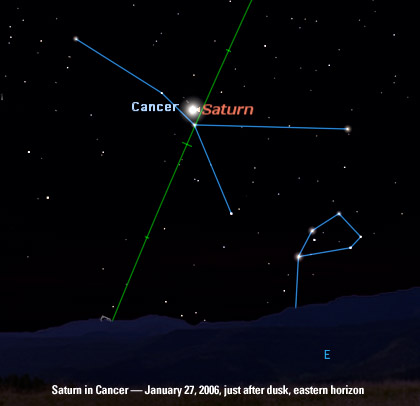


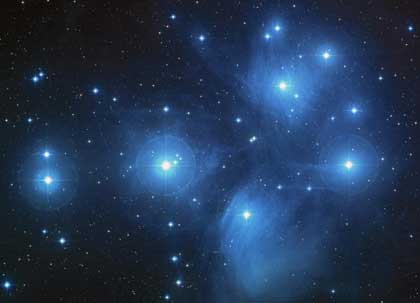
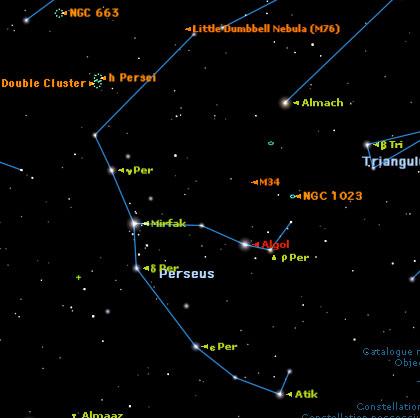

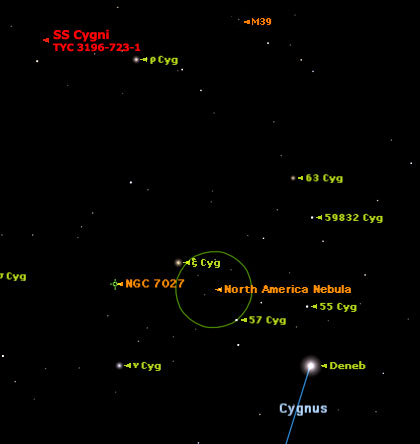
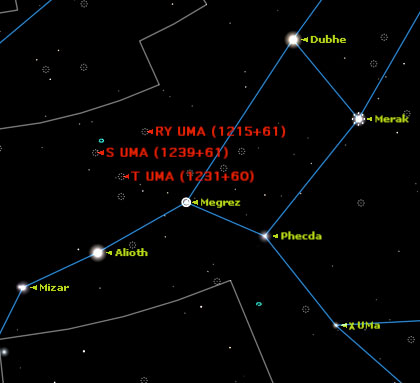
 "For hardcore astronomers, Starry Night® is the ultimate observation aid. It generates customized observation planners for every night of the year; it also works with many popular motorized telescopes
"For hardcore astronomers, Starry Night® is the ultimate observation aid. It generates customized observation planners for every night of the year; it also works with many popular motorized telescopes  to instantly center your eyepiece on whatever object you select. It even has a night observation mode that colors your display a deep red so you don't offend your fellow observers at star parties."
to instantly center your eyepiece on whatever object you select. It even has a night observation mode that colors your display a deep red so you don't offend your fellow observers at star parties." Starry Night® Pro Plus
Starry Night® Pro Plus